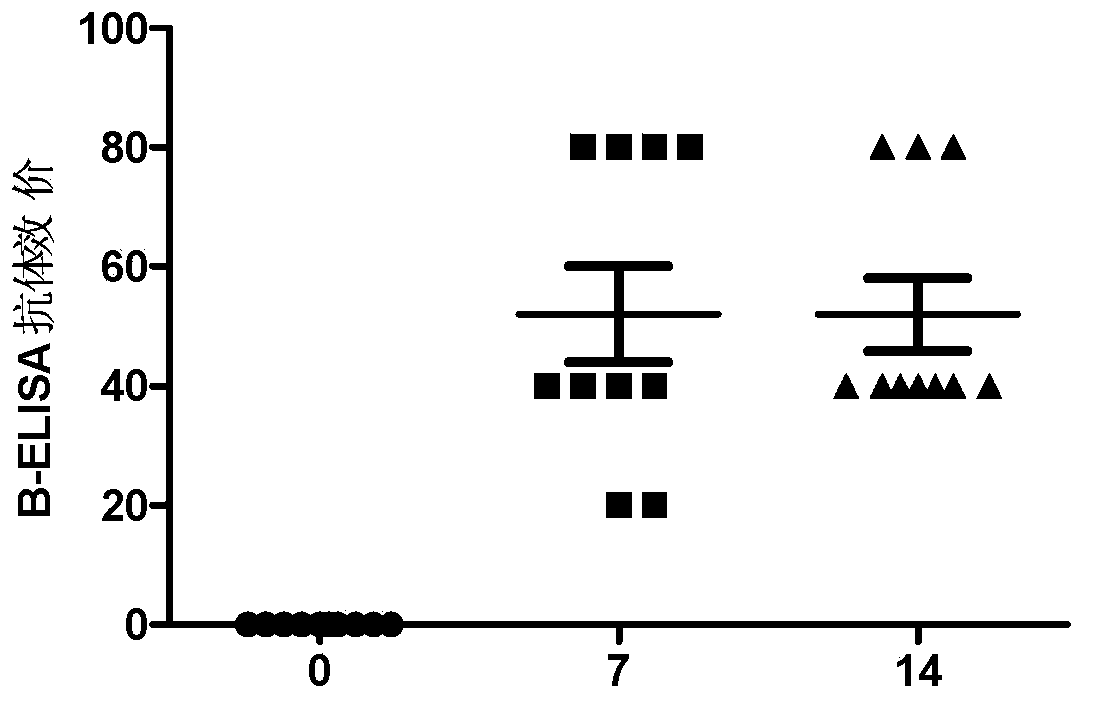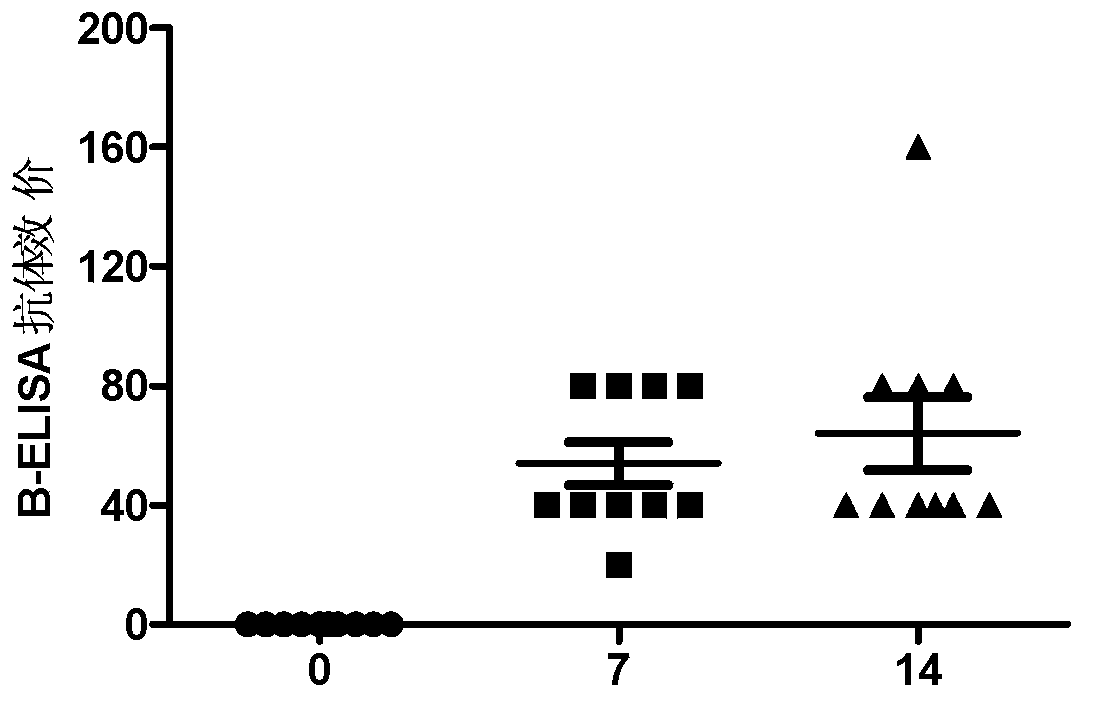Duck tembusu virus low virulent strain and application thereof
A technology for duck tambusu virus and attenuated strains, which is applied in the field of viruses, can solve the problems of no vaccine, no effective serological detection method, difficulty in preventing and controlling duck tambusu virus disease, etc., and achieves a good specific effect.
- Summary
- Abstract
- Description
- Claims
- Application Information
AI Technical Summary
Problems solved by technology
Method used
Image
Examples
Embodiment 1
[0035] Example 1 Subculture and Sequence Analysis of Duck Tembusu Virus
[0036] Use the isolated Duck Tambusu virus virulent strain FX2010 that causes ducks to become ill in nature, inoculate chicken embryo fibroblasts (CEF) into T75 cell culture flasks that grow into a single layer, inoculate 1mL of virus liquid in each bottle, and absorb 1- After 2 hours, discard the virus liquid, add 12mL of DMEM culture medium containing 10% fetal bovine serum, 36-72 hours later, absorb the culture supernatant, and then inoculate the T75 cell culture flask in which CEF grows into a single layer, and continuously subculture 173 passages, and then purified 5 times by limiting dilution method, then passaged to 180 passages. The 60th generation, 80th generation, 100th generation, 130th generation, 145th generation, 168th generation and 180th generation viruses were sequenced. The results are as follows figure 1 as shown ( figure 1 In , the gray shade indicates the newly added mutation point...
Embodiment 2
[0037] Example 2 The pathogenicity analysis of different generations of viruses to ducks
[0038] Infecting ducklings and laying ducks with different generations of viruses in the above-mentioned embodiment 1, by observing the clinical symptoms of ducks, the pathological changes after autopsy and the proliferation and distribution of viruses in ducks, the effects of different generations of viruses on ducks were analyzed. pathogenicity. The specific method is as follows:
[0039] (1) Nasal infection test in ducklings
[0040] Sixty 21-day-old healthy ducklings were randomly divided into 6 groups, 10 in each group. Groups 1-5 were inoculated nasally with FX2010 (dose 10 3.5 TCID 50 ), FX2010-60P, FX2010-80P, FX2010-100P and FX2010-130P (dose of 10 5.5 TCID 50 ), and the sixth group was the blank control group. On the 4th day after inoculation, autopsy, observe the pathological changes of organs, and take spleen, lung, kidney, brain and other tissues, add 1 mL of LPBS per...
Embodiment 3
[0147] The 180th generation poison (FX2010-180P) of embodiment 3 is to the immune effect of duck
[0148] The ducks inoculated with the 180th generation virus (FX2010-180P) were subjected to an immunization test, and challenged with a strong virus 14 days after immunization, to study the immune efficacy of FX2010-180P as a live vaccine on the inoculated ducks.
[0149] (1) The immune effect test of FX2010-180P on ducklings
[0150] Twenty 21-day-old healthy ducklings were randomly divided into 2 groups, 10 in each group. Group 1 was intramuscularly inoculated with FX2010-180P at a dose of 10 3.0 TCID 50 . Group 2 was the blank control group. Blood was collected 7 days and 14 days after inoculation, and the antibody titer was detected by blocking ELISA, and 10 3.5 TCID 50 The FX2010 was challenged, and the clinical symptoms were observed daily. Four days after the challenge, autopsies were performed to observe the pathological changes, and lung, kidney and brain tissues w...
PUM
 Login to View More
Login to View More Abstract
Description
Claims
Application Information
 Login to View More
Login to View More - R&D
- Intellectual Property
- Life Sciences
- Materials
- Tech Scout
- Unparalleled Data Quality
- Higher Quality Content
- 60% Fewer Hallucinations
Browse by: Latest US Patents, China's latest patents, Technical Efficacy Thesaurus, Application Domain, Technology Topic, Popular Technical Reports.
© 2025 PatSnap. All rights reserved.Legal|Privacy policy|Modern Slavery Act Transparency Statement|Sitemap|About US| Contact US: help@patsnap.com



